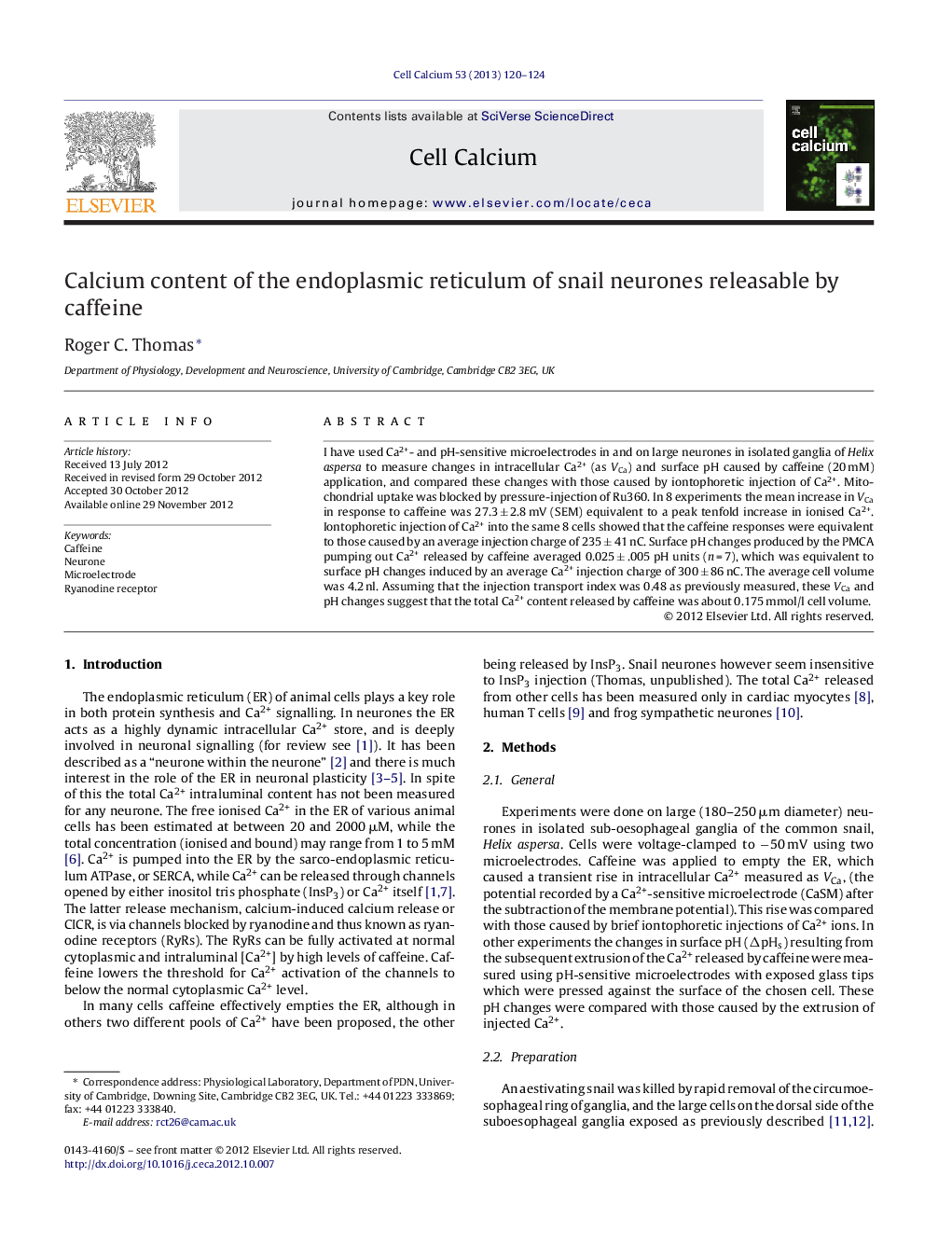| Article ID | Journal | Published Year | Pages | File Type |
|---|---|---|---|---|
| 10926292 | Cell Calcium | 2013 | 5 Pages |
Abstract
I have used Ca2+- and pH-sensitive microelectrodes in and on large neurones in isolated ganglia of Helix aspersa to measure changes in intracellular Ca2+ (as VCa) and surface pH caused by caffeine (20 mM) application, and compared these changes with those caused by iontophoretic injection of Ca2+. Mitochondrial uptake was blocked by pressure-injection of Ru360. In 8 experiments the mean increase in VCa in response to caffeine was 27.3 ± 2.8 mV (SEM) equivalent to a peak tenfold increase in ionised Ca2+. Iontophoretic injection of Ca2+ into the same 8 cells showed that the caffeine responses were equivalent to those caused by an average injection charge of 235 ± 41 nC. Surface pH changes produced by the PMCA pumping out Ca2+ released by caffeine averaged 0.025 ± .005 pH units (n = 7), which was equivalent to surface pH changes induced by an average Ca2+ injection charge of 300 ± 86 nC. The average cell volume was 4.2 nl. Assuming that the injection transport index was 0.48 as previously measured, these VCa and pH changes suggest that the total Ca2+ content released by caffeine was about 0.175 mmol/l cell volume.
Related Topics
Life Sciences
Biochemistry, Genetics and Molecular Biology
Cell Biology
Authors
Roger C. Thomas,
